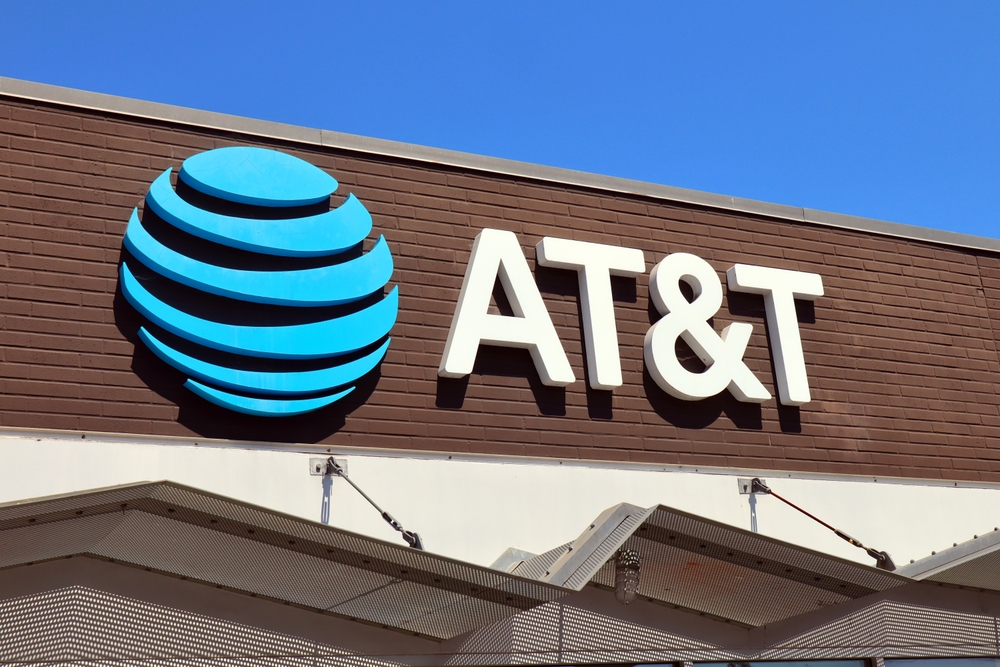Your cart is currently empty!
AT&T Customers Can Receive up to $7,500 in $17M Data Breach Settlement: Here’s How to Claim

When news of a $177 million settlement makes headlines, it isn’t just another corporate payout—it’s a reminder of how fragile our digital lives have become. AT&T’s data breaches didn’t just expose numbers on a spreadsheet; they revealed pieces of millions of identities, from Social Security numbers to call records. The scale of the settlement reflects more than financial loss—it reflects the price of trust in an era where privacy is constantly under siege.
What Happened and Why It Matters
AT&T, a longstanding leader in telecommunications, confronted two significant data breaches in 2024 that collectively affected tens of millions of account holders—both current and former. The first incident, revealed in March, impacted approximately 73 million people, with hackers obtaining Social Security numbers, birth dates, and other sensitive personal information that eventually surfaced on the dark web. AT&T later described this as relating to a dataset from 2019 or earlier.

In July, AT&T disclosed a second breach that exposed call and text records for “nearly all” of its wireless customers, stemming from unauthorized access on a cloud platform. A federal judge has since given preliminary approval to a $177 million settlement in response to both breaches, with a final approval hearing scheduled for December 3, 2025, in the Northern District of Texas.
Independent reporting suggests the actual scope may be even broader. According to Hack Read, more than 86 million customers were affected, including over 44 million Social Security numbers exposed—information that was fully decrypted and resurfaced multiple times on cybercrime forums.
What makes these breaches particularly concerning is the nature of the information compromised. Unlike passwords, which can be changed, Social Security numbers, birth dates, and physical addresses are immutable identifiers. When aggregated, these data points enable criminals to craft detailed identity profiles—powerful tools for identity theft, fraud, or phishing schemes. The long-term consequences of such breaches extend far beyond immediate inconvenience; they pose enduring threats to financial security and personal privacy.
Inside the Settlement
AT&T’s proposed resolution totals 177 million dollars and is structured as two funds overseen by the U.S. District Court for the Northern District of Texas. The court granted preliminary approval, and a final approval hearing is set for December 3, 2025 at 9:00 a.m. CT in Dallas. You can review the official case site and calendar of deadlines on the court-authorized settlement website, and Reuters provides additional context on the preliminary approval. Telecom Data SettlementReuters
The settlement defines two classes. AT&T 1 applies to the incident disclosed in March 2024 and allows a documented loss claim up to 5,000 dollars for losses that occurred in 2019 or later, provided the losses are fairly traceable to that incident. AT&T 2 applies to the incident announced in July 2024 and allows a documented loss claim up to 2,500 dollars for losses on or after April 14, 2024 that are fairly traceable to that incident. An overlap class exists for people who qualify under both. Details are laid out in the official FAQ.
Distribution follows a clear order. Documented loss claims are paid first from each net settlement fund. Any money left is then distributed on a pro rata basis to valid claimants. Within AT&T 1, a tier system differentiates class members whose Social Security number was included in the incident from those whose other data elements were included. Tier 1 payments are set at five times Tier 2, subject to the fund and number of claims. AT&T 2 also offers a Tier 3 option for account owners who choose a pro rata cash payment instead of documenting losses.
Key dates are fixed on the record. The claim deadline is November 18, 2025. Requests to opt out or to object must be postmarked by October 17, 2025. Electronic or ACH payments require filing online through the settlement site. These dates and instructions are published on the official site.
Use this step-by-step guide focused strictly on the claim process. It links only to official or verified sources and avoids broader security advice, which we will cover later.
- Verify you’re in the class: Check your eligibility on the court-authorized settlement website. If you are uncertain, contact the Settlement Administrator at (833) 890-4930 or by mail to Kroll Settlement Administration at the P.O. Box listed on the site.
- Watch for the official notice: Legitimate notices have been sent by Kroll Settlement Administration. Many customers received emails from attsettlement@e.emailksa.com with instructions and a Class Member ID. If you did not get an email, you can still confirm and file through the official site or by calling the administrator.
- File online or by mail — but use the official portal: Submit your claim at telecomdatasettlement.com or by mail to the address shown on the official site. Follow the on-screen or form instructions carefully. For electronic or ACH payment, you must file online. File by the claim deadline posted on the “Important Dates” section of the site.
- Gather acceptable documentation: You need reasonable documentation showing losses that are fairly traceable to the incident you’re claiming for. Examples include third-party receipts or statements. Self-prepared documents alone such as handwritten notes or personal spreadsheets are not sufficient, though they may supplement other proof.
- Account owners vs. line or end users: If you are a Line or End User rather than the Account Owner, you are eligible to claim documented losses. The site provides a registration path for Line or End Users to file their own claims, which requires the account number and the consumer telephone number. If both an Account Owner and a Line or End User submit claims, the Line or End User’s claim takes priority.
- Track status and ask questions the right way: Use the Contact Us options on the official site or call the administrator for status updates. Do not reply to unsolicited messages or click links from unknown senders about the settlement. Always navigate directly to the official site before entering personal information.
If you want quick access points: the official, court-authorized site is telecomdatasettlement.com and Time’s explainer confirms the administrator email and hotline details for notices.
AT&T’s Response and Public Perception
AT&T has emphasized that much of the customer data now circulating online is not the result of a new intrusion but rather the resurfacing of information tied to earlier incidents. In a statement to HackRead, a company spokesperson said: “It is not uncommon for cybercriminals to re-package previously disclosed data for financial gain.”
The spokesperson added: “We just learned about claims that AT&T data is being made available for sale on dark web forums, and we are conducting a full investigation.”

Following further analysis, AT&T issued another clarification: “After analysis by our internal teams as well as external data consultants, we are confident this is repackaged data previously released on the dark web in March 2024.” The company noted that affected customers had been notified previously and confirmed that law enforcement had been alerted to the latest developments.
Despite these assurances, skepticism persists. Consumer advocates point out that even if the data is “repackaged,” its repeated resurfacing underscores the lasting consequences for victims whose Social Security numbers and other identifiers are permanently exposed.
The case also draws comparisons to T-Mobile’s 2021 breach, which compromised the records of 76 million people and led to a $350 million settlement, at the time one of the largest in U.S. history.
This mixture of official denial, consumer mistrust, and high-profile precedent highlights why AT&T’s settlement is being closely scrutinized by regulators, investors, and millions of customers.
The Larger Cybersecurity Crisis
Telecom databases are prime targets because they hold high-value identifiers such as Social Security numbers, dates of birth, and contact records. Industry tracking shows attackers continue to lean on human-factor weaknesses and credential misuse across thousands of real incidents worldwide.
A key lesson from recent mega-campaigns is how criminals chain old and new data. Investigations into the 2024 Snowflake-related thefts tied to the ShinyHunters group found that infostealer-harvested credentials and the lack of multifactor authentication enabled access to multiple customer environments, illustrating how previously stolen data can fuel new intrusions.
U.S. cyber authorities have likewise documented a steady drumbeat of ransomware and data-extortion activity and maintain rolling advisories for defenders. Furthermore, the business impact keeps rising. IBM’s Cost of a Data Breach Report 2024 found an average global breach cost of 4.88 million dollars, with stolen or compromised credentials the most common initial attack vector among studied cases.
Finally, why these exposures linger: unlike passwords, Social Security numbers are difficult to change and generally remain with a person for life, which means a single breach can seed years of risk. The Social Security Administration explains the narrow circumstances for obtaining a new number in Identity Theft and Your Social Security Number.
Protecting Yourself in the Aftermath
Financial settlements only go so far. The real priority for customers is limiting long-term risks.
- Credit Freeze: Place a freeze with all three major credit bureaus to block criminals from opening new accounts.
- Credit Monitoring: Check your reports regularly for unfamiliar accounts or suspicious inquiries.
- Identity Theft Protection: Enroll in monitoring services if offered, or use alternatives that alert you to misuse of your information.
- Multi-Factor Authentication: Turn on MFA for banking, email, and telecom accounts to reduce the risk of unauthorized access.
- Phishing Awareness: Treat unexpected emails or texts with caution and avoid clicking on unverified links.
- Fraud Alerts: Add a one-year fraud alert to your credit file so lenders verify identity before issuing credit.
- Immediate Action: If you spot misuse, file an identity theft report and follow the prescribed recovery steps promptly.
The Bigger Lesson
The AT&T settlement underscores a reality that stretches far beyond one company: once sensitive data is exposed, it cannot truly be taken back. Financial compensation may ease some of the burden, but it does not erase the risks that follow customers for years.

This case also illustrates a broader challenge for the telecom industry. As attacks become more sophisticated, companies entrusted with vast amounts of personal information are expected to adopt stronger protections and respond with greater transparency. Public trust hinges on it.
For consumers, the lesson is sobering but clear. Settlements are not shields against identity theft. Protection comes from vigilance, proactive security habits, and an understanding that in the digital economy, safeguarding personal data is as essential as safeguarding money in the bank.
